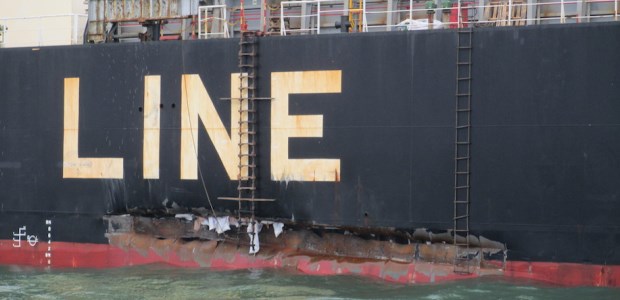
Coast Guard Proposes Update to Marine Casualty Damage Threshold
Mandatory drug and alcohol testing would still be required if the property damage meets the revised threshold for serious marine incidents of more than $200,000 that is proposed in the NPRM.
The U.S. Coast Guard published a Notice of Proposed Rulemaking -- potentially one of the last federal proposed rules that will be published until a hiatus imposed by new President Donald Trump has ended -- on Jan. 23 that would revise the property damage threshold amounts for reporting a marine casualty and for reporting a type of marine casualty called a "serious marine incident." Because the existing dollar amounts were promulgated in the early1980s and have not been updated, they haven't kept pace with inflation, so relatively minor casualties must be reported. "Additionally, the regulations require mandatory drug and alcohol testing following an SMI; consequently, testing is being conducted for casualties that are less significant than those intended to be captured by the original regulations. Updating the regulations will reduce the burden on vessel owners and operators, and will also reduce the amount of Coast Guard resources expended to investigate these incidents," the NPRM states.
Comments on it are due (visit www.regulations.gov and search for Docket Number USCG-2016-0748) on or before March 24.
The existing regulations weren't intended to require owners or operators to notify the Coast Guard of casualties involving relatively minor property damage, it notes. Marine casualty reports affected by this proposed rule are ones where the only outcome was property damage from $25,000.01 to $72,000. And because the regulations require mandatory drug and alcohol testing following a serious marine incident, current regulations require testing for casualties that reach a minimum threshold of $100,000 in property damage, but the proposal says because of inflation, casualties that result in property damage between $100,000 and $200,000 are no longer representative of a "serious" casualty.
"The lack of inflation updates to our marine casualty regulations has resulted in an additional administrative and financial burden on vessel owners and operators, as well as on Coast Guard resources used to investigate these incidents. This NPRM would result in an estimated annual cost savings of $40,809 to industry due to a reduction in the hourly burden of reporting and recordkeeping for both marine casualties and SMIs, and a reduction in an estimated annual cost savings of $4,649 for chemical testing for marine casualties designated as SMIs," it says. "This NPRM would result in Coast Guard cost savings by reducing the hourly burden costs to investigate marine casualties as well as the costs associated with processing marine casualty forms."
Mandatory testing would still be required if the property damage meets the revised threshold for SMIs of more than $200,000 that is proposed in the NPRM.
The intent of the NPRM is to allow the marine industry and Coast Guard to focus efforts on preventing higher-consequence incidents. From 2012 through 2014, the Coast Guard found there were an average of 5,967 reports of a marine casualty per year and an average of 271 (4.5 percent of the total) were serious marine incidents.